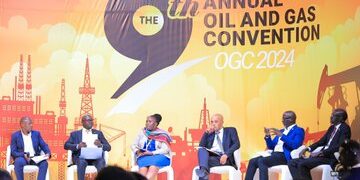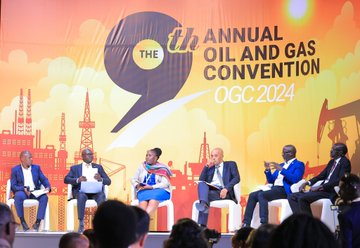The Energy and Mineral Development Minister, Hon. Dr Ruth Nankabirwa, has said that out of US$7.14bn approved for investment in key oil projects, US$1.914 billion (36%) is committed to Ugandan companies during the development phase.
She was Wednesday speaking at the 9th Annual Oil & Gas Convention ongoing at Kampala Serena Hotel organized by the Uganda Chamber of Mines & Petroleum under the theme, ‘The Journey to First Oil in the Face of a Just Energy Transition in Uganda.’
This, she pointed out, pushes Uganda close to the 40% national content target for the phase.
She further disclosed that approximately US$11,909,641 has been injected into the community economy through the provision of goods and services. A total of 13,821 Ugandans (93%) were employed in the sector at the end of 2023.

Uganda Oil Refinery
Asked about the oil refinery, Nankabirwa assured the public that the Uganda Refinery is on course.
The Petroleum Authority of Uganda boss, Ernest Rubondo, disclosed that investments in oil and gas stand at $1.85 billion in 2022, $1.9 billion in 2023 and $3.19 billion expected in 2024.
This week, the Uganda National Oil Company (UNOC) hosted a team of media professionals and tourism bloggers on a two-day tour of the various oil and gas projects, including Kabalega Industrial Park (KIP), Tilenga, Kingfisher, and Enviroserv.

The aim of the trip was to provide participants with firsthand knowledge and experience of these projects, deepen their understanding of operations, and foster stronger relationships with the operators.
When asked if a litre of fuel will go for as low as Shs1000 by 2025, UNOC stated: “2025 is when we expect production of crude oil to begin. At this point, it’s not yet ready for use by the consumer.”
“Refining of the crude oil into fuel products such as diesel and petrol will only start once the Refinery is operational and even then, fuel prices cannot be determined locally, they are impacted internationally,” added UNOC.
The Uganda Oil Refinery is a planned crude oil refinery in Kabaale village, on the Eastern shore of Lake Albert along the Hoima–Kaiso–Tonya Road, Buseruka Sub-county, Hoima District, Western Region, Uganda, near the border with the Democratic Republic of the Congo.
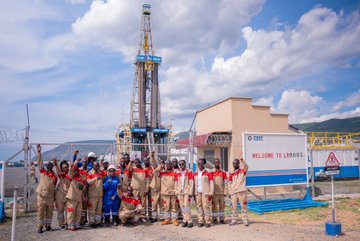
EACOP
The East African Crude Oil Pipeline (EACOP) Deputy Managing Director, John-Bosco Habumugisha, highlighted the advancements of the EACOP saying 98% of the land compensation agreements have been signed, with 97% already paid.
He noted that the construction of the above-ground installations has commenced while the coating plant in Tanzania has been commissioned.
He described EACOP as the “umbilical cord,” linking Uganda’s oil fields to the global market. The EACOP will make use of clean energy sources such as hydroelectric and solar power to fuel the pipeline’s operations.
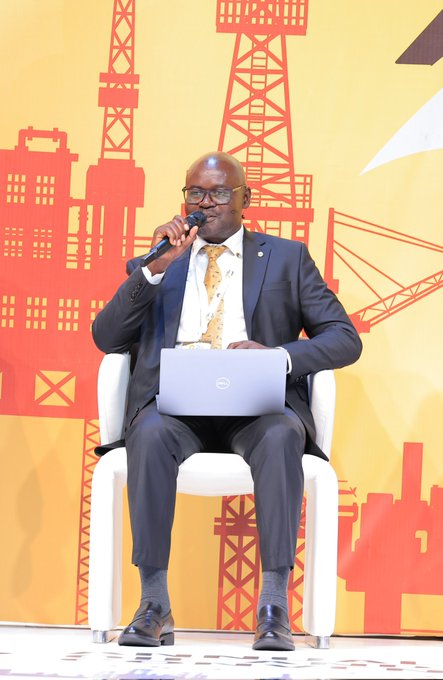
Progress of drilling oil reservoirs (wells)
TotalEnergies General Manager, Philippe Groueix, reiterated commitment to First Oil timelines, saying it requires “joint effort”. He also reinforced his commitment to environmental protection and conservation.
“We have been working hard to ensure that the Tilenga, Kingfisher and EACOP are the best in class worldwide in terms of Carbon dioxide (Co2) emissions. On the upstream and midstream, we are talking about 13kgCo2 per barrel produced & transported in comparison to an industry average of 33kgco2/barrel. So, we are much lower than the average of the industry worldwide due to our efforts to reduce emissions to the bare minimum.”
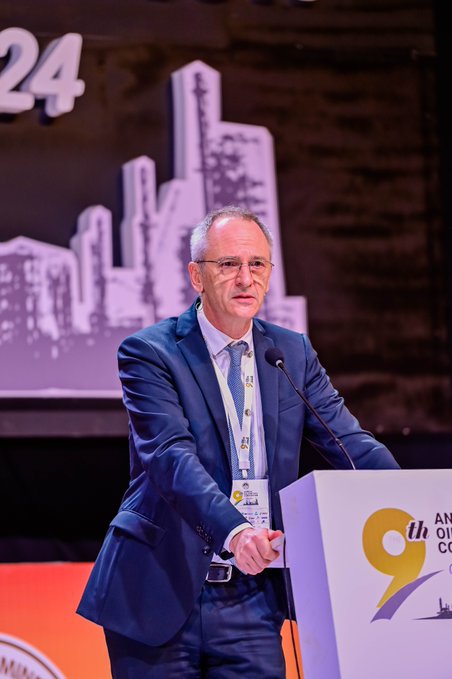
He said they will produce on Tilenga and Kingfisher 100,000ktons of Liquefied Petroleum Gas (LPG) per year which presents an opportunity to substitute the use of charcoal with LPG and in turn improve the health of communities and help to reduce the country’s CO2 emissions.
“We have engaged in a very large agricultural development program and we are active in access to water, energy and education. On the Tilenga project progress, we are drilling at full speed with 3 rigs, 2 in the South Nile and 1 in the park. We are about to move the 2nd rig to the park by mid-May in order to accelerate drilling with the objective to conclude the first drilling sequence by the end of 2025 and reduce significantly the industrial activity in the park, leaving it to the tourists by the end of 2025.”
James Berya Opiyo, the Interfaces Manager at TotalEnergies, said all platforms in the Central Processing Facility area, Operator’s camp, and Operations Support base have been handed over to McDermott, the EPSCC contractor.
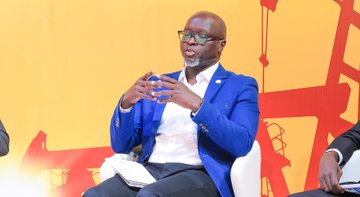
“Three rigs are in simultaneous operation with lessons learnt from 1 well drilled being incorporated in subsequent wells for drilling efficiency while 35 wells have been drilled so far with a target of 98 wells by the end of 2024, 237 wells are required to be drilled to reach plateau production,” he noted.

